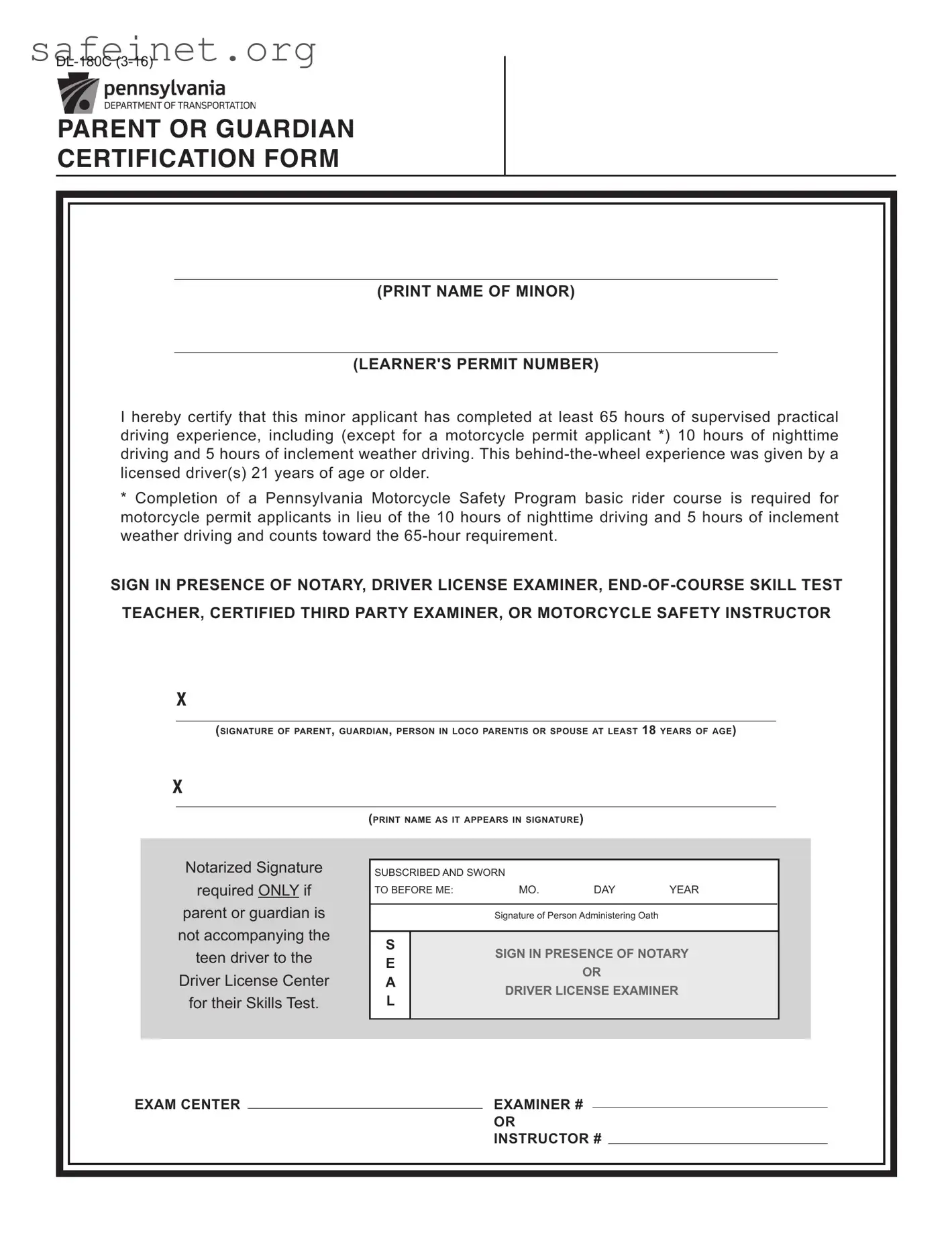The DL-180T form, also known as the Parent or Guardian Certification for a Junior License, resembles the DL-180C in its purpose to verify the driving experience of a minor. Like the DL-180C, the DL-180T requires a parent or guardian to certify the completion of specified driving hours. Applicants must report the number of supervised driving hours, including nighttime and inclement weather driving, effectively providing proof of readiness for the next stage of licensing. The signature of the parent or guardian must also be notarized, similar to the requirements of the DL-180C.
The DL-59 form is another document that shares similarities with the DL-180C, specifically concerning the certification of supervised driving experience for learners. While DL-180C is focused on a minor’s learner's permit, the DL-59 applies to adult learners seeking a driver's license. In both instances, the documents require an attestation to completed driving hours under supervision, although the age of the applicant differentiates their use. Both forms necessitate authenticated signatures, ensuring validity in the certification process.
The MV-300 form, concerning the Certification of Driving Experience, stands parallel to the DL-180C by emphasizing the completion of required driving hours for new drivers. The MV-300 is tailored for specific driving courses. It requires instructors to confirm that students have satisfied the practical experience criteria set forth by regulatory agencies. Both forms involve an accountability structure, where a responsible adult or instructor substantiates the claimed hours, promoting safety and preparedness for driving.
The DL-193 form, known as the Certification of On-Road Driving Experience, further mirrors the DL-180C in its focus on ensuring that a driver has received adequate behind-the-wheel training. Like the DL-180C, the DL-193 mandates certification from an authorized individual, confirming that the applicant has acquired a minimum number of driving hours. Both documents aim to create a standardized method for verifying driving experience before advancing to the next licensing step, thereby enhancing road safety.
The MV-401 form, a Summary of Driving Experience, serves a similar role in establishing supervision during the learning process. While it captures a broader range of educational contexts beyond just behind-the-wheel training, it still demands that parents or guardians affirm the applicant's driving hours. The MV-401 and DL-180C both focus on the importance of documented, verified driving experience, a crucial factor in licensing new drivers. Documenting this experience assures regulatory bodies that applicants are adequately prepared to operate a vehicle independently.

